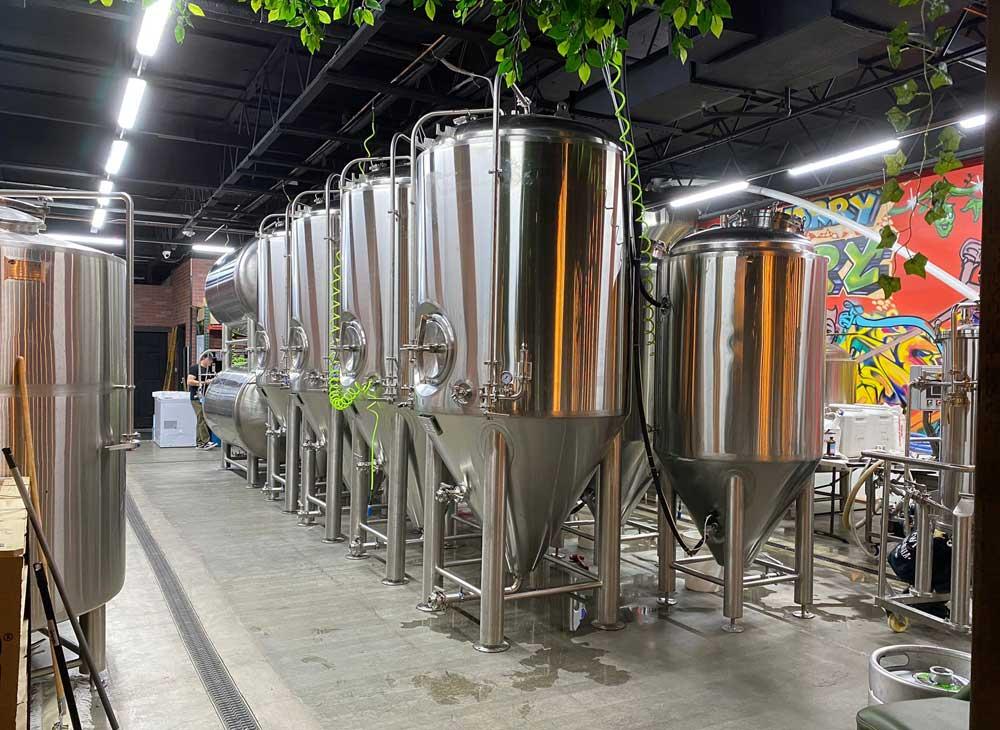
In the world of brewing and other fermentation processes, fermentation vessels play a crucial role. Whether you are a homebrewer or running a commercial brewery, the correct selection and use of fermentation vessels directly impact the quality, flavor, and stability of the final product.
The Basic Concept of Fermentation
Before delving into the purpose of fermentation vessels, it's important to understand the basic concept of fermentation. Fermentation is a biochemical process, typically catalyzed by yeast, bacteria, or other microorganisms. During fermentation, yeast converts sugar into alcohol and carbon dioxide, while also producing various flavor and aromatic compounds. In brewing, fermentation is not just the process of alcohol production, but a key stage in imparting unique flavors and characteristics to the beer or wine.Fermentation occurs in several stages:
· Primary Fermentation: This is where yeast begins to rapidly multiply, consuming available sugars and producing alcohol and carbon dioxide.
· Secondary Fermentation: After primary fermentation, the beer or wine is often transferred to a new vessel to remove sediment, improving clarity and flavor.
· Maturation: In some cases, a maturation phase takes place after fermentation, allowing the flavors to develop further.
Types of Fermentation Vessels
Open Fermentation VesselOften used in small-scale brewing, especially in traditional beer-making.
Pros: Open vessels allow yeast to "breathe," making them suitable for high-temperature fermentation, like some Belgian beers. Gases can easily escape, reducing pressure.
Cons: Susceptible to contamination from environmental microorganisms, requiring careful control of external influences. High demands for temperature and oxygen control.
Closed Fermentation Vessel
The most common vessel in modern brewing, typically cylindrical with a sealed lid and airlock.
Pros: Effectively prevents the entry of oxygen and contaminants, making them ideal for beers requiring longer fermentation. The pressure can be controlled, allowing brewers to adjust yeast activity for better flavor.
Cons: More complex, beginners may need time to get familiar with the equipment and its maintenance.
Stainless Steel Fermentation Vessel
The standard in modern brewing, known for its excellent corrosion resistance.
Pros: Easy to clean and maintain, withstands high temperatures and pressures, ideal for commercial brewing.
Cons: Higher initial cost.
The Primary Purposes of Fermentation Vessels
Providing an Ideal Fermentation EnvironmentThe primary function of a fermentation vessel is to create an optimal environment for yeast, which includes controlling temperature, humidity, and oxygen levels. Yeast is highly sensitive to environmental conditions—too high or too low a temperature can impact yeast activity, fermentation efficiency, and the final product's quality.
Preventing Contamination
The vessel design should effectively prevent external contaminants. Open vessels are easily exposed to airborne microorganisms, which can lead to fermentation failure or undesirable flavors. Sealed vessels use airtight designs to minimize contamination risks, ensuring the purity of the brew.
Controlling Gas Release
During fermentation, yeast produces carbon dioxide. Fermentation vessels need to be vented to allow the safe release of CO2 while preventing external air from entering. Many modern fermentation vessels come with airlocks specifically designed to release gases without letting impurities in.
Enhancing Flavor Development
The material and design of the fermentation vessel can impact the flavor of the beer or other fermented beverages. For instance, stainless steel preserves the purity of flavors, while wooden barrels can impart unique aromas to the fermentation process.
Ease of Cleaning and Maintenance
Fermentation vessels need to be easy to clean and sanitize to prevent bacterial growth or contamination. Any leftover residue or dirt can affect both the fermentation process and the final product's quality. Therefore, selecting vessels that are well-designed and easy to maintain is essential.
Supporting Temperature Control
Some fermentation vessels are equipped with built-in temperature control systems to maintain a constant fermentation temperature. Temperature regulation is crucial for yeast activity and the final product's outcome. Small variations in temperature, especially when brewing specific beer styles, can lead to significant flavor differences.
Factors to Consider When Choosing a Fermentation Vessel
MaterialThe material of the vessel is a key factor in its selection. Different materials affect cleanliness, durability, and flavor. Common materials include stainless steel, glass, plastic, and wood, each with its advantages and drawbacks.
Capacity
The vessel size should match the scale of your brewing operation. Homebrewers typically opt for smaller vessels, while commercial breweries require larger vessels to meet production demands.
Temperature Control Features
Some fermentation vessels come with integrated temperature control systems, ideal for brewing processes that require strict temperature management. Proper temperature control can significantly improve brewing efficiency and product quality.
Ease of Cleaning and Maintenance
Fermentation vessels should be easy to clean and sanitize to prevent bacterial contamination. Choosing vessels that are well-designed and easy to disassemble can help minimize cleaning challenges.
Cost Considerations
Budget is an important consideration when selecting fermentation vessels. Brewers should choose vessels that offer the best value for money without compromising the quality of the brewing process.
Still have a problem on choosing the brewery equipment? We can help with your final decision. If you are looking for a turnkey solution for craft beer brewing system, please contact us. We are looking forward to working with you. Send an email now: [email protected]


.jpg)





Get A Quote